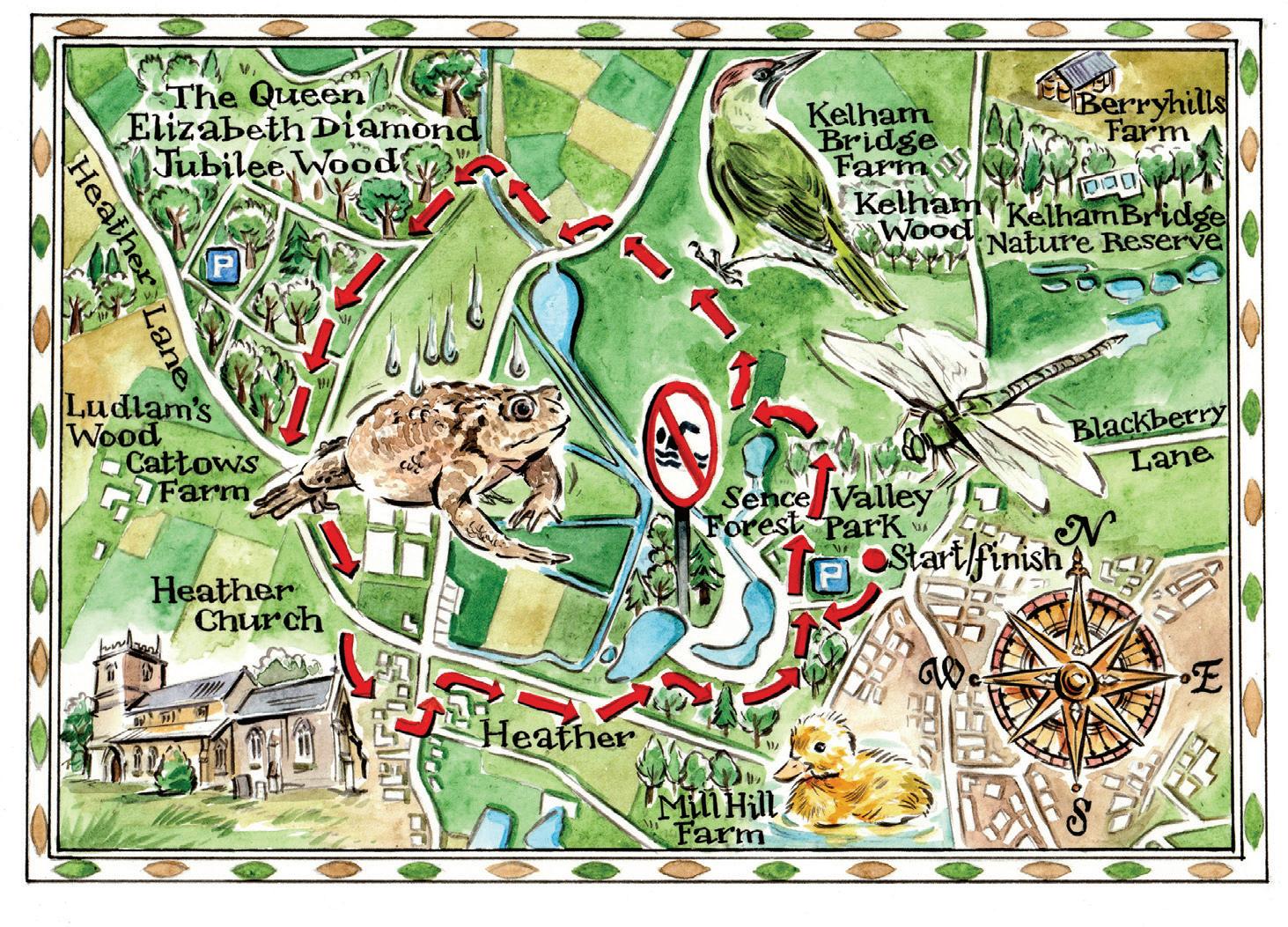
2 minute read
Bird of the Month: Little Owl
The Little Owl
by john mcewen illustrated by carry akroyd
Advertisement
You clench your claws
As upon Wisdom’s shoulder,
Where once the Athenians perched you
By that helmeted head.
Pansy-faced owl:
We too would see you as her
Blunt-browed familiar. Susanne Knowles from City Owl – Lincoln’s Inn Fields
Athena is one of the greatest divinities of ancient Greece. Her father was Zeus, mightiest of the gods. Her mother was Metis, the wisest. As Athens’s patron, she has her shrine in the Parthenon.
Her sacred bird is the little owl (Athena noctua) – hence the origin of the ‘wise owl’. Athenian coins bearing the bird’s image were called owls. The current Greek one-euro coin depicts an owl; its image of Athena noctua is copied from a 500 BC drachma piece.
Florence Nightingale had a pet little owl, Athena. ‘It was odd how much I loved you,’ she lamented when it died. It is an exhibit in the Florence Nightingale Museum in St Thomas’ Hospital, London. Picasso’s pet little owl was called Ubu. When Ubu snorted its dislike, Picasso would shout ‘Cochon! Merde!’, to be even ruder.
Noctua means ‘owl’. The nocturnal association is as applicable to the little owl as to other owls, although they are notably diurnal. Despite a vast Eurasian and North African range, they became resident in England only after substantial releases of imported birds were made in the late-19th century by landowners such as Lord Lilford at Lilford Hall, Northamptonshire.
The little owl was soon condemned by gamekeepers. It was not until 1950 that the Ministry of Agriculture and Fisheries officially exonerated it when its diet was found to comprise mostly insects and rodents.
It found an uncontested niche in England and flourished, but in the last 30 years has declined by threequarters, owing to manifold changes in the countryside. This column’s illustrator, Carry Akroyd, knows of one killed by a red kite – near Lilford. Dr Emily Joachim’s Little Owl Project is a vital monitor.
There are currently 5,000 little owls in Britain. Most of them are in England, with some even in London, as Susanne Knowles’s poem indicates. Richmond Park is their London headquarters. In 2021, they bred in Regent’s Park and Kensington Gardens.
Being daylight hunters, they are a more familiar sight than might be expected. They’re preyed on themselves by other birds of prey, so their preference for sheltering in old buildings and walls provides useful camouflage.
Their pocket size was illustrated in Country Life this year by a photograph of an adult fitting inside the mouth of a drainpipe, its blackrimmed eyes like targets. They can also put on too much weight when feast follows famine. One rendered flightless by obesity was brought to the Suffolk Owl Sanctuary in 2020. A monitored diet allowed it to fly off after a fortnight.
They are creatures of habit, returning to the same nesting sites and perches. A friend writes from Oxfordshire that a local pair annually nest in an ancient oak. They will allow a car to draw alongside when they are perched on their favourite stump. They’re sometimes accompanied by their owlets – ‘adorable micro-owls’.









